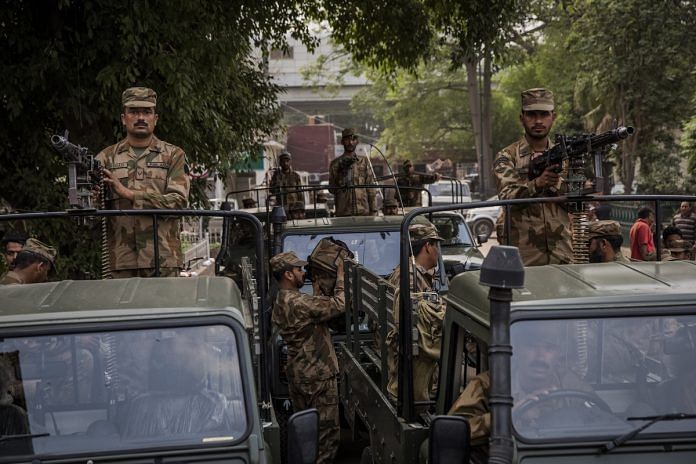Army has arrested members of Pashtun Tahafuz Movement but it hasn’t gone after them with the brutality it has used on Baloch separatists.
In my most recent The Wall Street Journal column (read it here), I write about the Pashtun Tahafuz (protection) Movement (PTM), a non-violent group that campaigns against human rights abuses by Pakistan’s army against the Pashtuns, Pakistan’s largest linguistic minority. Some 30 million Pashtuns account for 15 per cent of Pakistan’s population. Over the past four months, PTM has attracted thousands of protesters to its rallies.
There’s a wider context to Pashtun discontent. For most of its seven decades of existence, Pakistan has struggled to accommodate grievances by ethnic minorities. In 1971, Bengali-speaking East Pakistan seceded to form the new nation of Bangladesh. The army – easily Pakistan’s most powerful institution – has fought (and largely crushed) a bloody insurgency in Balochistan. Last year, Pakistan effectively dismantled the Muttahida Qaumi Movement, a political party associated with Mohajirs, descendants of Muslim migrants from India.
In part, this discomfort with both minority protest movements and parties, viewed as unsympathetic to the army, has to do with Pakistan’s decision to define itself in ideological rather than territorial terms. As the Hudson Institute’s Husain Haqqani, a former Pakistani ambassador to the US, writes in his new book, Reimagining Pakistan: “Pakistan could have recognised its diversity and evolved as a multi-language federation with political and cultural autonomy for its constituting units. Instead, its leaders chose to base Pakistani identity on a national ideology”. That ideology, says Haqqani, has three cornerstones: Islam, hostility to India and the Urdu language.
In Bangladesh, Pakistan used force to quell Bengalis and failed. Its regular playbook, which relies on a combination of brute force and a well-oiled propaganda machine, may not work against the Pashtuns either.
For starters, Pakistan’s 30 million Pashtuns greatly outnumber other ethnic minority groups such as the Baloch (seven million) and the Mohajirs (16 million). Thanks to migration, Pakistan’s commercial capital, Karachi, also contains the largest concentration of Pashtuns in the world: about four million people.
Add to that 14 million Pashtuns in Afghanistan, where they form a 42 per cent plurality of the population.(The PTM has no connection with Afghanistan, and works strictly within the boundaries of Pakistan’s constitution, but Afghan and Pakistani Pashtuns share close ties of kinship and culture.) In February, Afghanistan President Ashraf Ghani tweeted in support of the PTM.
The PTM’s embrace of non-violence also makes it harder to target harshly without international backlash. Though the group protests against excesses committed by the military during Pakistan’s crackdown on the terrorist group Tehreek-i-Taliban Pakistan (TTP), or the Pakistan Taliban, PTM leaders are focused on civilians inadvertently caught up in the conflict. They argue that any terrorists among the thousands of Pashtun disappeared must be tried in court. (Two weeks ago, a US drone strike killed the brutal TTP leader Mullah Fazlullah in Afghanistan.)
In the face of a media blackout, the PTM has used Twitter, Facebook and YouTube to get its message across, including to the Pashtun diaspora in the West. This too makes it harder to curb than other Pakistani protest movements. According to Mohsin Dawar, a senior PTM leader, “had there been no social media there would be no PTM”.
And finally, in 26-year-old Manzoor Pashteen, the PTM has a charismatic leader who has quickly attracted a devoted following among his people. Abubakar Siddique, an analyst with Radio Free Europe in Prague, believes Pashteen is akin to Nelson Mandela for the Pashtuns.
Perhaps keeping all of these factors in mind, the Pakistan army has approached the PTM with relative restraint. It has arrested PTM members, placed travel restrictions on the movement’s leaders, and used the domestic media to smear them. But it has not gone after them with the brutality it has used, for instance, on Baloch separatists.
Will the army’s relative restraint last? Mohammad Taqi, a regular US-based commentator on Pashtun and Pakistani politics, worries that it may not. “If all you have is a hammer, every problem looks like a nail,” he says.
This piece was originally published in AEI ideas and has been republished with permission.



